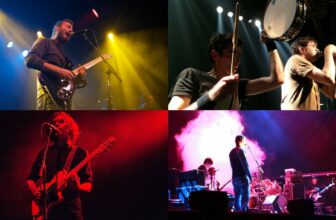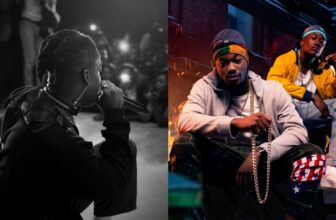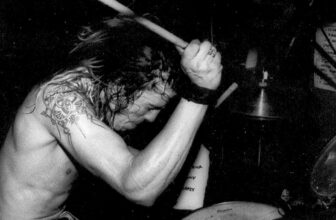12 Types Of Pop Music

With its catchy melodies and repeated choruses, pop, as the name suggests, is the most popular type of music in the world today. There are many definitions of pop music as it is a very broad genre. Also, there are many subgenres and types of pop music, enriching the genre every day with new artists.
It is not easy to put a definition to pop music as it is a very broad term with a soft frame. The characteristics of pop music are catchy and easy-listening melodies, repeated choruses, simple yet relatable lyrics, and emphasis on the rhythm groove. However, pop music is not just about music today, as it is highly related to pop culture and social media.
Let’s dig deeper into the types of pop music to better understand the distinctions between the styles of some famous artists and songs.
Contents
1. Pop Rock
Pop rock is one of the most common types of pop music. It is a softer and more commercial version of rock with more emphasis on songwriting, recording, and mixing and less emphasis on attitude and musicality. It is less instrumental and easier to sing along to than rock music.
Pop rock’s roots go back to the 50s when it emerged from rock n’ roll as a softer alternative. It was an upbeat variety of rock music with more catchy melodies, repeated choruses, and softer instrumentation.
Artists like the Beatles, Peter Frampton, and The Bells are some old-school pop-rock examples, while the likes of Maroon 5, The Script, and OneRepublic are recent examples.
2. Electropop
One of the recent and popular pop music styles is electropop, which fuses electronic and pop music. It is considered a version of synth-pop with heavier use of electronic sounds. Today, heavy use of electronic sounds became a standard in pop music, and electropop has become the dominant style.
While electropop’s history can be traced back to the 80s and the rise of synth pop with names like Gary Numan, the Human League, Soft Cell, and John Foxx, the style was revived by Britney Spears in 2007 with her “Blackout” album. Later, many artists followed that path, like Lady Gaga, Rihanna, Billie Eilish, and many more.
3. Teen Pop
As the name suggests, Teen Pop is a subgenre of pop music targeted at teenagers. Teen Pop is an umbrella term as teen pop songs can have strong influences from R&B, dance, electronic, hip hop, and rock.
Teen Pop has the characteristics of mainstream pop music, such as choreographed dances, heavy importance on visual appeal, and lyrics on relatable topics such as love, relationships, party culture, dancing, friendship, etc. The style of teen pop is relatively easy-listening, with auto-tuned vocals, heavy repetitions on choruses, and simple melodies.
Many pop music artists can be considered Teen Pop, at least with some of their songs. Rihanna, Kylie Minogue, Spice Girls, Justin Bieber, and Backstreet Boys are some of the names that come to mind.
4. Hip Pop (Pop Rap)
As a fusion of hip-hop and pop music, hip-pop or pop rap mixes catchy melodies and choruses with rhythm-based vocals. Pop rap was highly popular in the 90s with famous names like Run-DMC, LL Cool J, and Beastie Boys. Oftentimes, the choruses are similar to pop, while the verses are rapped.
The sub-genre was developed during the late 80s and got stronger each year as many artists dominated the pop-rap scene. After the 2000s, bands like Black Eyed Peas and artists like Drake, Nicki Minaj, Pitbull, and many more made hip pop one of the most popular pop styles.
5. Bubblegum
Defined by simple childish lyrics, basic chords, and melodies, as well as harmonized vocals, Bubblegum Pop is an upbeat and catchy blend of rock n’ roll and pop music. The subgenre has its roots in the late 60s, targeting children and adolescents.
The first Bubblegum Pop hit was “Sugar, Sugar” by the fictional rock band The Archies. Most Bubblegum hits are one-time-wonders, and the music was considered disposable music.
The subgenre remained a commercial force until the late 70s as the characteristics of the genre, including upbeat tempo patterns, catchy hooks, and simple song structures, were carried into punk rock.
6. Country Pop
As a result of country and pop music fusion, Country Pop uses string instruments and folk harmonies of country music along with catchy melodies, simple chords, and repetitive choruses of pop music. Some notable artists in the subgenre are Miley Cyrus, Taylor Swift, Kacey Musgraves, and Billy Currington.
Country Pop began to take shape in the 1950s when the Nashville sound was founded to reform the country sound to reach a wider audience, especially younger listeners. By the 70s, many country artists were already ranked in the pop lists. Therefore, the fusion was completed.
7. Folk Pop
Originating from the 1960s, Folk Pop mixes folk and pop music by using pop structures, backing bands, commercial sound, and less guitar for shorter and softer songs, along with catchy melodies and repetitive choruses. It can be described as the softer version of folk rock which was popular in the 60s.
The genre was highly popular in the 60s and the 70s due to artists such as Simon And Garfunkel, Cat Stevens, Donovan, and Joni Mitchell.
8. Sunshine Pop
Sunshine Pop is another pop subgenre that came to the music scene in the 60s in Southern California. It is a highly easy listening genre with lush vocals and light arrangements with lyrics around an appreciation for the world’s beauty. Some artists in the subgenre are The Turtles and the Association.
Sunshine Pop was a side branch of folk rock and California Sound movements. Most bands in the genre tried to follow the footsteps of bigger bands, such as The Beach Boys and The Mamas & the Papas. Sunshine Pop had its peak in the 60s all over the world.
9. House Pop
House Pop is a loosely defined term that signals the dance-pop music that uses the ways of House music production. It is not an exact mix of pop and a house music sub-genre as it has characteristics such as the dominance of vocals, highly melodic structures, polished synths, and clean beats.
House pop has a chill vibe instead of the euphoric feeling of heavier EDM genres. House Pop can be similar to any House music subgenre, such as Deep House, Garage House, Future House, Ambient House, and more.
Bob Sinclair, David Guetta, and Avicii are some examples, even though not all of their songs fall into this category.
10. Pop-R&B
Often called Contemporary R&B, Pop-R&B is an old pop style that fuses rhythm and blues with different influences like pop, electronic, funk, and soul. The genre is characterized by the heavy use of drum-machine rhythm grooves, pitch-corrected vocals, and a distinctive production style.
The subgenre had its roots in the late 1970s when hip-hop was just coming to the music scene. Later in the 80s, a version of hip-hop emerged without the grit and roughness and more elements from soul, pop, and funk.
Names like Curtis Mayfield, Marvin Gaye, and Stevie Wonder opened the way, while Beyonce, Usher, Alicia Keys, and many more significantly contributed to the genre.
11. Jazz Pop
Jazz pop is a pop style that borrows elements and influences from Jazz music. The complex jazz instrumentation gives way to a more melodic and easy-listening format with a more vocal or instrument-centered structure. Also, jazz pop allows for only short improvisation parts, unlike jazz.
Some important jazz-pop musicians are Kenny G, Bob James, and George Benson. The melody and the swing of jazz music are key to the style, along with the soft production, commercially viable, and radio-friendly arrangements.
12. Orchestral Pop
One of the lesser-known pop music styles is Orchestral Pop, which is pop music composed for and played by an orchestra. Mainly, orchestral pop consists of symphonic performances of popular music like “Yesterday” by The Beatles, which was one of the first examples of the style.
In the late 60s, many producers started experimenting in unconventional ways and worked on orchestral arrangements of the releases of their artists. Some examples are Burt Bacharach and the Beach Boys’ Brian Wilson from the past, while The Last Shadow Puppets is a more recent example.
Are there more types of Pop Music?
There are countless types of pop music, as fusion genres are constantly evolving and are hard to keep track of. There are many different types of pop music, and the combination of subtypes gives birth to new types regularly.
What is Pop Music characterized by?
Pop music is characterized by catchy and easy-listening melodies, repeated choruses, simple yet relatable lyrics, as well an emphasis on the rhythm groove. Besides that, social media presence, extended choreographies, and place in pop culture are also highly important for today’s pop music world. K-Pop can vouch for that.
Can any instrument be used in Pop Music?
While most pop music tunes are created with some of these instruments; drums, bass, electric guitar, synth, strings, vocals, and backing vocals, any instrument can be used in pop music. Instead of the instrument itself, the melody, simplicity, and catchiness are more important for pop music.
Conclusion
Pop music is probably the most popular music today, as the name suggests. With its simple melodies and song structures, catchy choruses, relatable lyrics, and many different styles, it is an ultimately fun genre to explore and listen to. Even though there are many clichés and similarities between most pop songs, there are many differences and styles when you dig deep into the genre.





